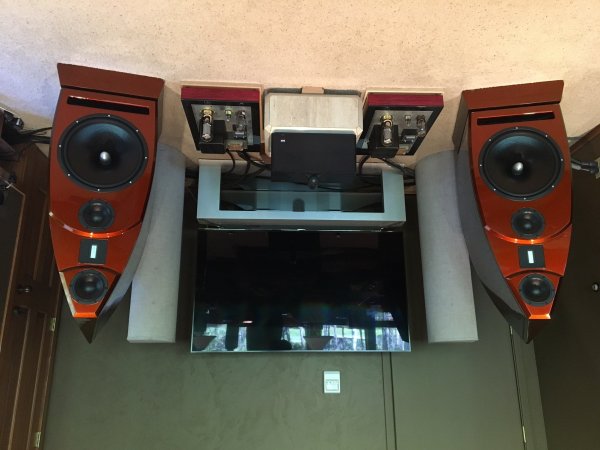Why do so many acousticians recommend absorption for everything in the room, vs. just using absorption for the bass portion of the space?
Are guys just unquestioningly going back to some research paper someone wrote a century ago? Have acousticians become accustomed to dead sounding spaces and everything else sounds wrong? Or are there valid reasons?
Over the years most have progressed away from an oversimplification of the horrible sounding, thin absorption all over the room. The real hurdle is not a question of the gross amount or area of how much absorption vs diffusion vs reflective. In domestic listening rooms it's all about addressing the bandwidth and spectral balance of the energy in the room over time. Extensive absorption gets a harsher critique than is warranted from so many putting 1-2" thick panels everywhere in days fortunately long past. While this makes a big change to the acoustics, it does so only above 1-4kHz, leaving the rest to roll around the room, and hugely shifting the balance of energy to sound tubby and dull. If the absorption is adjusted to have a more broad band effect and less aggressive in the upper frequency range, the results are much more pleasing, with very noticeable improvements in clarity, intelligibility, image specificity, and tonal balance.
A more reflective, diffusive solution which attacks strong reflections so they don't stand out from the crowd as much will result in an improvement in spaciousness, soundstage width, and tonal balance while making for a subjectively larger image vs the precise and pinpoint image of a less reflective room. Again this is all about addressing the full bandwidth.
Absorption is much easier to conceptually understand in terms of wide bandwidth, and apart from the devices being necessarily deeper and bulkier, they are easier to design and deploy in room. I like to recall a tip and realization Keith Yates gave to me over a frosty beverage. Paraphrased: "Well placed, broad band absorption is the poor man's diffusion." The "poor man's" qualifier here was not as literal as it was a colloquial term, and really meaning those not investing in extensive modeling and complex, and then expensive, diffusion devices which benefit from more detailed knowledge when selecting and deploying. The point to take away and being made was that treating the right areas with broad band absorption and leaving reflective areas between can achieve the desired effect through a more empirical and straight forward approach with affordable or easily constructed devices. The key here is the broad band qualifier, where this basically means anything protruding less than 3" from the wall/surface should be scrapped. Occasionally such panels are useful in larger rooms to attack a few surfaces after other extensive treatments are applied, but the treatments that have significant, and really desirable absorption effects will be thick.
There are products which combine some diaphragmatic and unique, resistive elements to achieve absorption below 500Hz in reasonable depths, and this is where data can be useful to qualify products. RPG's Abfusor and newer designs from Quest Acoustics combine higher frequency diffusion with mid-band absorption to better balance the high frequency and lower frequency treatment in the room, and are a very useful step beyond the 2-3" absorption panels. Another more recent trend in products more readily available (previously more so custom solutions) are those like GIK's Alpha and Impression series of thick absorbing panels where a hard face with differing area and patterns of openings maintain some reflectivity and diffusion effects above 1-4kHz, while the reduced open area on the front often enhances the lower frequency absorption. In simple terms, the idea is to limit the higher frequency absorption to better balance the 125-500Hz region.
The lower region ~100-500Hz is typically has long decay times and significant ringing in all but the largest and most open rooms or those with many openings and lossy surfaces. Ironically the easiest absorption panels to construct and deploy are most effective above 500-2kHz, and hence it requires some thought and creativity in selecting devices and approaches to control the energy in the room, be it through absorption and/or diffusion, in a balanced manner.


